Vij D.R. Handbook of Applied Solid State Spectroscopy
Подождите немного. Документ загружается.

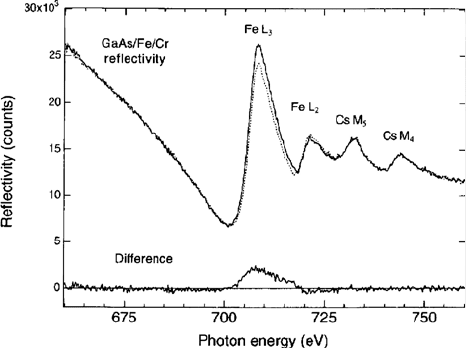
14.5 Applications
Figure 14.24 Circular dichroism of the specular reflection at the Fe L-resonances from a thin
difference spectrum (MCD).
14.5.3.5 Nitrides
Group III nitrides are wide band-gap semiconductor materials which are of
considerable technological interest. The range of the band gaps in InN, GaN,
AlN is 1.9–6.2 eV, which corresponds to photon energies covering the entire
visible to ultraviolet parts of the electromagnetic spectrum. Therefore,
knowledge of the electronic structure of valence and conduction bands of
these materials is of great importance. Compared to photoemission
spectroscopy (PES), which is a common method used to study the valence
states of materials, SXES has the advantage of directly probing the bulk
material. SXES is less prone to suffer from surface-related ambiguities in the
interpretation than the highly surface-sensitive PES, especially since cleaning
procedures can be time-consuming and intricate.
Combined SXAS and SXES studies of pure GaN [97] and the alloy system
Al
x
Ga
1–x
N [98] showed early on how valuable information about the
electronic structure can be extracted. Due to the atomic and orbital sensitivity
of either methods the spectra can be interpreted as partial occupied (SXES,
Figure 14.25) or unoccupied (SXAS, Figure 14.26) DOS. By plotting the
onset of the high energy edge of the N K-emission spectrum and the low
energy onset of the N K-absorption spectrum, one can extract information on
the band gap behavior as a function of the relative concentration of Al and Ga
in the Al
x
Ga
1–x
N system, and it was found that the band gap essentially has a
linear dependence with no detectable band bowing. Hybridization effects
allow the determination of binding energies of important shallow core-level
iron film. The top spectra are the raw data and the bottom spectrum is the corresponding
633

states such as Ga 3d-states, which are found some 19 eV below the top of the
valence band maximum of Al
x
independent of the Al concentration
(Figure 14.27). Similar hybridization features were investigated recently in
In
x
Ga
1-x
N [99] as well as post-transition metal oxides [100]. Polarization-
dependent SXAS is expected to show a strongly anisotropic behavior of the
bonding in single crystalline nitride films.
x 1–x
N of different Al concentrations x shown on a scale
relative to the valence band maximum. Six different Al concentrations (x = 0 –1) are compared.
Dashed lines indicate the approximate extent of the N 2p-band and emphasize the movement of
the top of the valence band as a function of Al concentration.
Figure 14.26 N K-absorption of Al
x
Ga
1–x
N of different Al concentrations x. Spectra for 6
14. Soft X-Ray Emission and Resonant Inelastic X-Ray Scattering Spectroscopy
Ga
1
-
x
N,
14.25 N K-emission of Al Ga
Figure
different Al concentrations (x = 0 7) are compared (with vertical offset).
–
634
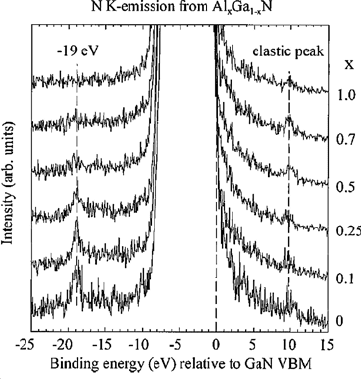
14.5 Applications
Figure 14.27 Blown-up view of the N K-emission of Al
x
Ga
1–x
N of different Al concentrations
x shown on a scale relative to the valence band maximum. The elastic peak contribution and
the Ga 3d-hybridization peak at 19 eV below the VBM are marked.
14.5.3.6 Lanthanides
When the symmetry in a solid is not spherical, the angular momentum of f
However, the crystal field is an order of magnitude smaller than the spin-orbit
splitting and can be treated as a perturbation. In the case of weak
hybridization effects, the interlevel coupling and consequently J-mixing in the
ground state of the system are often disregarded in the interpretation of
experimental data by the application of a pure atomic approximation (mainly
for high-energy spectroscopies) or by using a first-order crystal field theory
where the crystal field interaction is assumed to act only within the separate J
the ground state J-mixing directly from the data. For example, the estimation
of the J-mixing degree in high order crystal field theory by adjusting the
originating from difficulties in calculating the intensities of dipole-forbidden
electron-energy-loss spectra [101, 102] may result in a large uncertainty
manifolds. This is partly due to complications in extracting information about
crystal field parameters from the fit of optical absorption or low energy
Since the nature of the ground state defines various physical properties of a
system, knowing the ground state character is a key issue, especially in
technique can provide information about J-mixing in the ground state through
studies of intra-atomic fof excitations.
electrons is not conserved, and therefore J is not a good quantum number.
635
materials science. It turns out that for rare earth compounds the RIXS
14. Soft X-Ray Emission and Resonant Inelastic X-Ray Scattering Spectroscopy
transitions. In turn, the possible influence of the weak metal-ligand
hybridization is difficult to analyze quantitatively in the absence of so-called
charge transfer satellites in high energy spectroscopic data.
In this situation, the use of alternative spectroscopic means to obtain
showed that this mixing could be studied by taking advantage of dichroic
properties of rare earth 3d X-ray absorption. However, the method is limited
to magnetically ordered systems. Here, we discuss the potential of resonant X-
ray scattering spectroscopy in studying of the ground-state J-mixing when
applied to compounds without distinct, long-range, magnetic order and
significant metal-ligand hybridization.
Similar to optical absorption and electron-energy-loss spectroscopy with
respect to probing the optical scale excitations, RIXS at the same time
provides an additional level of the transition selectivity due to the element
specificity and dipole selection rules. In contrast to systems with strong metal-
ligand hybridization where the charge-transfer process leads to appearance of
intense lines in RIXS spectra as a result of interionic excitations, J-mixing in
systems with weak hybridization effects is expected to manifest itself in an
intensity gain of some intra-ionic (fof) transitions which are disallowed for
the pure Hund rule ground state. In other words, transitions with 'J other than
0, r1, and r2 are probed in the resonant excitation-deexcitation process.
Although J is not a good quantum number in the J-mixing case, we use this
terminology for simplicity.
A discussion about the RIXS potential to probe the ground state J-mixing
is based on the analysis of data obtained at the Dy 4d threshold of DyF
3
at
room temperature. Measurements at the 4d threshold of rare earths provide
naturally higher resolution than those at the 3d threshold, thus allowing one to
study elementary excitations in greater detail (see, e.g., [104]). Experimental
spectra of DyF
3
are displayed in Figures 14.28 and 14.29 on, respectively,
photon-energy and energy-loss scales. Two distinct groups of pronounced
inelastic-scattering peaks are observed in these spectra. The first group is dis-
tinguished by small energy losses on the tail of the elastic line, whereas the
second is characterized by energy losses of more than 2.5 eV. When the
excitation approaches the energy of the main broad maximum of the Dy 4d
absorption edge, the first group still possesses significant intensity while the
structures of the second group become relatively faint. Regarding the energy
scale on which the spectral variations occur, the observed transitions can be
attributed to intra-ionic fof excitations. The energy gap between two groups
of inelastic X-ray scattering structures reflects the separation between sextets
and quartets of trivalent Dy [106, 107], which can be reached due to the
excitation-deexcitation process.
636
ground state J-mixing information is essential. Recently, Finazzi et al. [103]
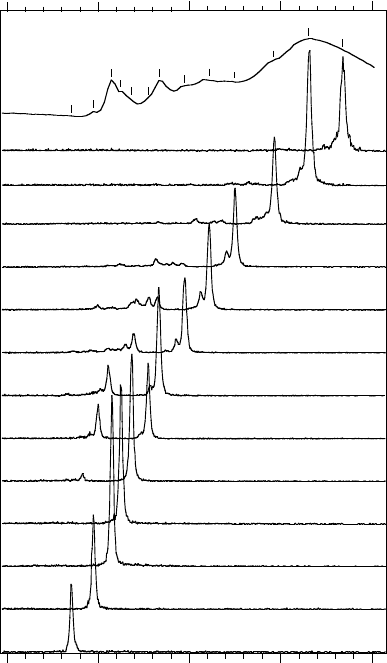
14.5 Applications
Indeed, the overall spectral shapes and their behavior with varying
excitation energies are reasonably well-reproduced by atomic multiplet
calculations for the Dy
3+
ion [108]. The results of calculations show that the
dominant elastic peak in all of the RIXS spectra of DyF
3
is to a large extent a
consequence of strong interference effects in the intermediate state of the
coherent second-order optical process. The states constituting the main 4d
absorption edge have a lifetime broadening of about 2 eV largely because of
Figure 14.28 The total electron yield spectrum at the Dy 4d edge and resonant X-ray scattering
spectra of DyF
3
normalized to the incident photon flux [105]. The letters correspond to the
excitation energies indicated in the absorption spectrum.
Normalized intensity
165
160
155
150
145
Photon energy [eV]
c
a
b
e
f
g
h
i
j
k
l
m
DyF
3
d
x0.8
x0.6
x0.7
x0.7
x0.8
the 4d-4f4f Coster-Koenig decay.
637
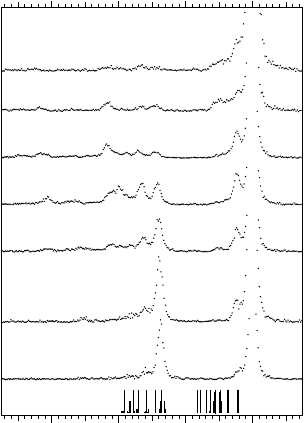
However, a close inspection of experimental RIXS spectra shows that
the pure atomic approximation. Thus, the feature with the energy loss of about
1.17 eV is observed in spectra h, k,andl, presented in detail in Figure 14.29.
While atomic multiplet theory predicts the nonzero intensities for resonant
inelastic X-ray scattering transitions to the
6
H
13/2
and
6
H
11/2
,and
6
F
11/2
sextets
of the 4f
9
configuration (the Hund rule’s ground state is
6
H
15/2
), the energy of
the extra-feature in experimental spectra h, k,andl is close to those of
6
F
9/2
and
6
H
7/2
manifolds of Dy
3+
in LaF
3
[109]. This is an indication of J-mixing
and the presence of J = 13/2 and J = 11/2 components in the ground state of
DyF
3
. Indications of other extra-structures missing from atomic multiplet
calculations can be seen in the energy loss range between 1.2 and 2.0 eV, as
in spectra l and m.
Figure 14.29
RIXS spectrum of DyF
3
excited at various energies across the 4d edge, and
plotted on an energy loss scale.
To simulate the effect of J-mixing, we calculated transition intensities
within the pure atomic approximation by choosing
6
H
13/2
and
6
H
11/2
as initial
states for the scattering process. The excitation energy was taken to be the
same as that for experimental spectrum l (since the intensity of extra-
structures is higher for excitation energies at the main absorption edge) and
the core hole lifetime broadening was set to 2.0 eV. According to these
calculations, the spectral weight at an energy loss of about 1.17 eV (transitions
Intensity (arb. units)
-6 -4 -2 0
Energy (eV)
f
g
h
i
j
k
l
DyF
3
14. Soft X-Ray Emission and Resonant Inelastic X-Ray Scattering Spectroscopy
there are some spectral structures that are not revealed in calculations within
638
14.5 Applications
to
6
F
9/2
and
6
H
7/2
) should constitute 56% and 217% of that at 1.0 eV
(transitions to
6
F
11/2
) for
6
H
13/2
and
6
H
11/2
as initial states, respectively.
Although accounting for weak but finite Dy 4f-F 2p hybridization may give
rise to some changes in calculated relative intensities in both cases, it is clear
that an admixture of the J = 11/2 component in the ground state results in a
stronger effect than for the J = 13/2 component. Since the degree of J-mixing
in DyF
3
is relatively low, the J = 11/2 contribution to the ground states is
expected to be comparable with the J = 13/2 contribution in order to explain
the noticeable weight of “forbidden” transitions in the inelastic scattering
component has been found to be comparable to the J = 13/2 component in the
ground state of Dy
3+
-doped yttrium scandium gallium garnet [102] as a result
of the crystal field interaction.
To estimate the effect of this interaction on the shape of RIXS spectra,
model crystal field multiplet calculations for the Dy
3+
ion in the crystal field
of O
h
symmetry with a strength of 35 meV were made. Figure 14.30 shows
the 1.0–2.2 eV energy-loss region of the spectra calculated using a pure
atomic approximation and crystal field multiplet theory. It is clear that
switching on the crystal field gives rise to additional transitions. The
calculated intensities are too low to fully account for the observed spectral
weight in experimental data at the corresponding energy loss. This suggests
that interatomic coupling is also important for the description of the inelastic-
scattering profile in the energy loss range between 1.0 and 2.0 eV and that the
appearance of additional structures is rather a combined effect of the crystal
field interaction and Dy 4f-F 2p hybridization. However, calculations taking
into account both the crystal field and F 2p
o
Dy 4f charge transfer excitations
are complicated by a huge number of multiplets and require very large
computational resources.
The existence of J-mixing in the intermediate state raises a question about
how strongly the inelastic scattering intensity at energy losses between 1.0 eV
and 2.0 eV is related to J-mixing in the ground state of DyF
3
. To estimate this,
crystal field multiplet calculations with the crystal field interaction switched
off in the intermediate state have been performed. Thus, any J-mixing in the
core excited state was disallowed. A comparison of the results of calculations
with, respectively without, crystal field interaction in the intermediate state
(Figure 14.30) does not reveal any significant changes in the inelastic
scattering intensities of “forbidden” structures on switching off J-mixing in
the core excited state. One of the main reasons for that is a large core hole
lifetime broadening. As a whole, the calculations indicate that the spectral
weight in the energy loss region between 1.0 and 2.0 eV is largely determined
by J-mixing in the ground state of DyF
3
.
639
spectra in Figure 14.29. This is not unusual. For example, the J = 11/2
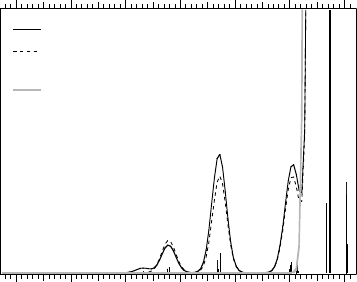
Figure 14.30 A 1.0–2.2 eV energy-loss region of inelastic X-ray scattering spectra of the Dy
3+
system calculated using a pure atomic approach (intermediate coupling) and crystal field
multiplet theory (O
h
symmetry). In the calculations Slater integrals were scaled down to 80%,
75%, and 66%, respectively, from the Hartree-Fock values. Excitation energy was set to the
main absorption maximum (spectrum l in Fig. 14.28) and the core hole lifetime broadening was
taken to be 2.0 eV.
14.5.3.6 Actinides
The case of uranium is quite illustrative for what the RIXS technique can do.
RIXS measurements at the U 5d threshold provide an opportunity to study in
detail elementary excitations in U compounds due to the higher resolution of
such experiments in comparison with those at the U 3d and 4d thresholds. It
turns out that the technique, in contrast to X-ray absorption spectroscopy, is
very sensitive to the valency and the chemical state of uranium. Figure 14.31
shows X-ray absorption spectra of a number of U compounds recorded across
broadening is quite large, thus reducing the usability of XAS.
As a result, the U 5d absorption spectra in the figure do not exhibit sharp
features. The substantial smearing of spectral structures hampers the analysis
of the chemical state and the chemical environment of uranium in various
compounds. In particular, it is difficult to distinguish between uranium
species with different oxidation states, especially in the case when one of the
species has a much lower concentration than other.
640
14. Soft X-Ray Emission and Resonant Inelastic X-Ray Scattering Spectroscopy
Intensity (arb. units)
-2.2 -2.0 -1.8 -1.6 -1.4 -1.2 -1.0
Energy (eV)
O
h
crystal field (35 meV)
no crystal field in the
intermediate state
atomic
the U 5d edge in the total electron yield mode. The 5d core hole lifetime
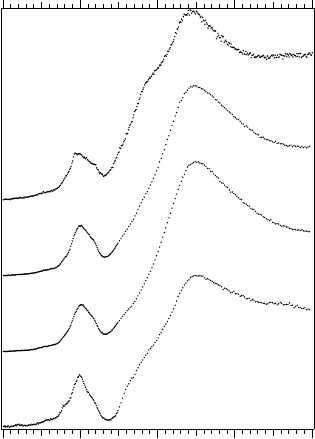
14.5 Applications
Figure 14.31 Total electron-yield spectra of UF
4
, UO
2
, U
3
O
8
, and UO
3
near the U 5d
absorption edges.
In this situation, the principally unlimited resolution (defined by the
excitation sharpness and the response function of the instrument) of the RIXS
technique and its ability to enhance transitions to specific excited states are
especially useful. The RIXS profile strongly depends on the choice of the
excitation energy. The spectral weight corresponding to electronic transitions
within the 5f shell is enhanced at excitation energies close to 100 eV, while at
higher energies of the incident photon beam set to the main 5d absorption
edge, interionic excitations of charge-transfer character, such as ligand 2poU
5f charge-transfer, dominate the RIXS spectra. This has been established by
measurements on a set of model U compounds and by model calculations.
The spectral pattern of intra-ionic fof excitations is mainly determined by the
formal valency of U; in turn, the charge-transfer transitions strongly depend
on the chemical environment of U ions.
An example of probing the fof excitations in U systems is illustrated in
Figure 14.32 where the RIXS spectra of solid UF
4
, recorded for various
incident photon energies in the pre-5d threshold region, are displayed. The
assignment of sharp inelastic scattering structures to the fof transitions is
supported by atomic multiplet calculations for the U
4+
ion. The spectra were
calculated using a model where the varying lifetime of core excited states due
to the autoionization via the 5d-5f5f super Coster-Koenig decay was taken
Intensity (arb. units)
13012011010090
Photon ener
gy
(eV)
UO
3
U
3
O
8
UO
2
UF
4
U 5d
absorption
641
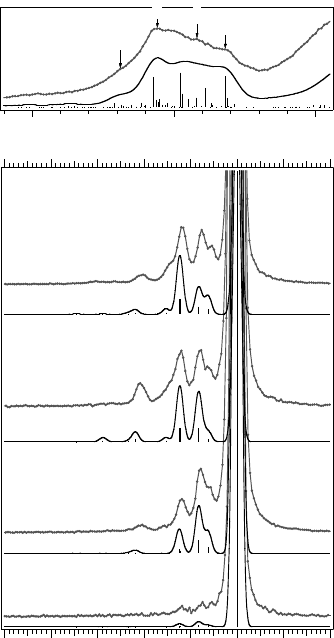
into account. The autoionization into the continuum of g symmetry only was
considered since it is the most dominant path. Matrix elements were obtained
from Cowan’s programs [110] so that Slater integrals were scaled down to
75%, 75%, 66%, and 80%, respectively, from the Hartree-Fock values. The
reduction factors for Slater integrals represent the effect of the intra-atomic
configuration interaction; the same factors were used in a number of
publications to successfully reproduce 4d X-ray absorption and 4d
photoemission spectra of various rare earth systems [111, 112, 113]. The
density of states of the continuum was assumed to be constant and the kinetic
energy of the continuum electron was set to the value that made the average
energies of 5d
9
f
3
and 5d
10
5f
1
Hg equal.
Figure 14.32 Resonant X-ray scattering spectra of UF
4
[114] recorded at different excitation
energies close to the U 5d threshold (lines with markers) together with the results of atomic
multiplet calculations (sticks with thin lines) for the U(IV) ion. Excitation energies are
indicated by arrows on the total electron yield spectrum at the U 5d absorption edge shown in
the top panel
.
642
14. Soft X-Ray Emission and Resonant Inelastic X-Ray Scattering Spectroscopy
Intensity (arb. units)
-5 -4 -3 -2 -1 0 1 2
Energy (eV)
x 1/3
x 1/3
a
b
c
d
UF
4
Intensity (arb. units)
10510095
Photon energy (eV)
a
b
c
d
U 5d
XAS
